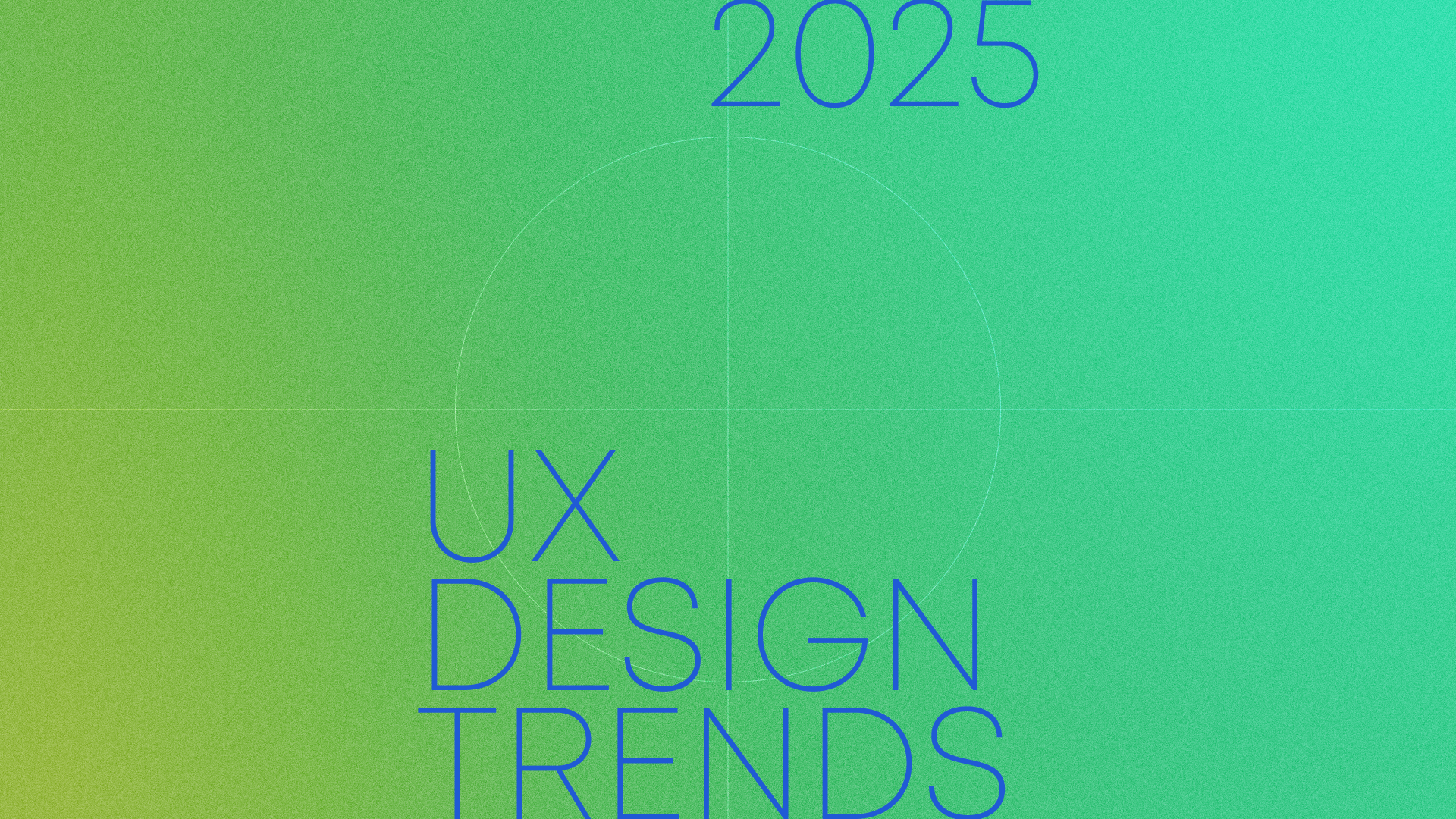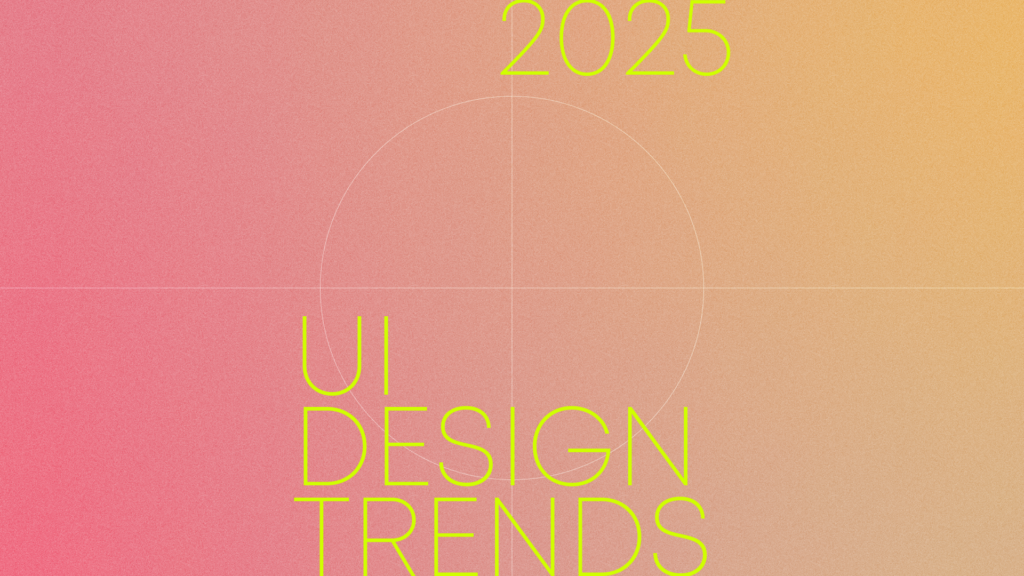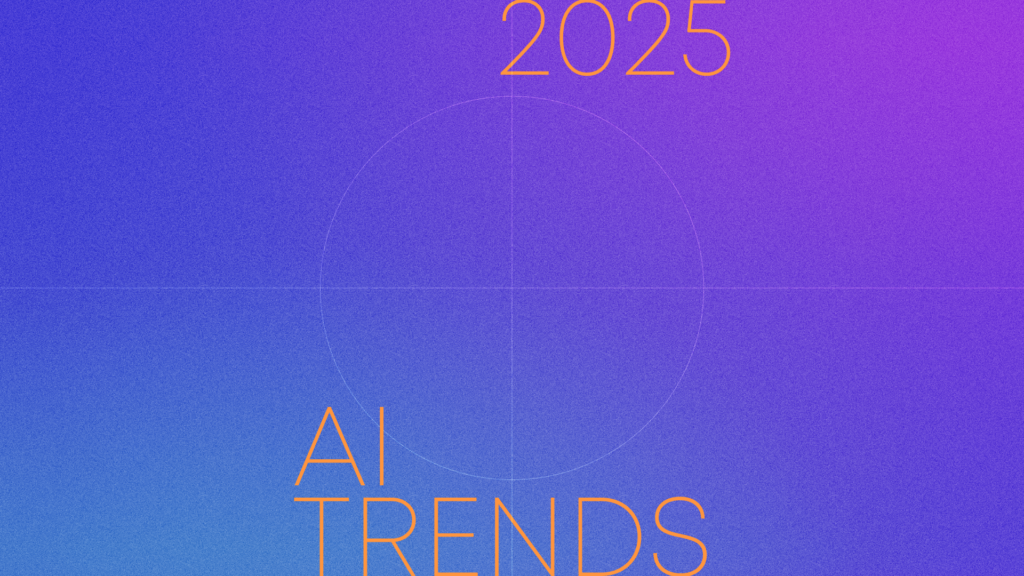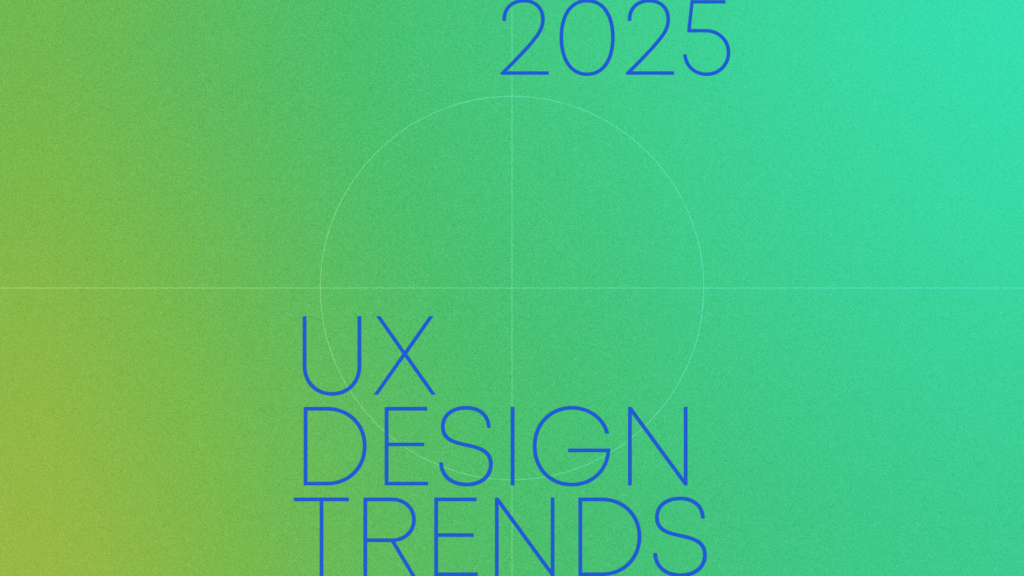The evolution of UI/UX design is tied to how technology and user behavior intersect. In 2025, several factors are influencing this evolution:
- Rapid Technological Advancements: AI, AR, VR, and voice technology are maturing, providing new tools for designers.
- Heightened User Expectations: Users demand faster, smarter, and more intuitive digital experiences.
- Global Accessibility Focus: Inclusivity is no longer optional—it’s expected.
- Sustainability and Ethics: Users care about ethical design practices and sustainability in digital products.
For digital design agencies, these factors create both challenges and opportunities. The key is to embrace these changes proactively.
Why 2025 is a Pivotal Year for UI/UX Design
Staying ahead of UI/UX trends isn’t just about keeping up with change—it’s about taking the lead and setting new standards. As we move into 2025, user experience (UX) and user interface (UI) design are on the cusp of a transformative era. Emerging technologies, evolving user expectations, and a growing focus on inclusivity and ethics are reshaping the design landscape.
This guide is your ultimate reference to understanding and leveraging the key UI/UX trends of 2025. From AI-powered hyper-personalization to immersive AR/VR experiences, this article will equip you with the knowledge to create digital experiences that are not only innovative but also meaningful.
1. Hyper-Personalization Through AI: From Generic to Tailored Experiences
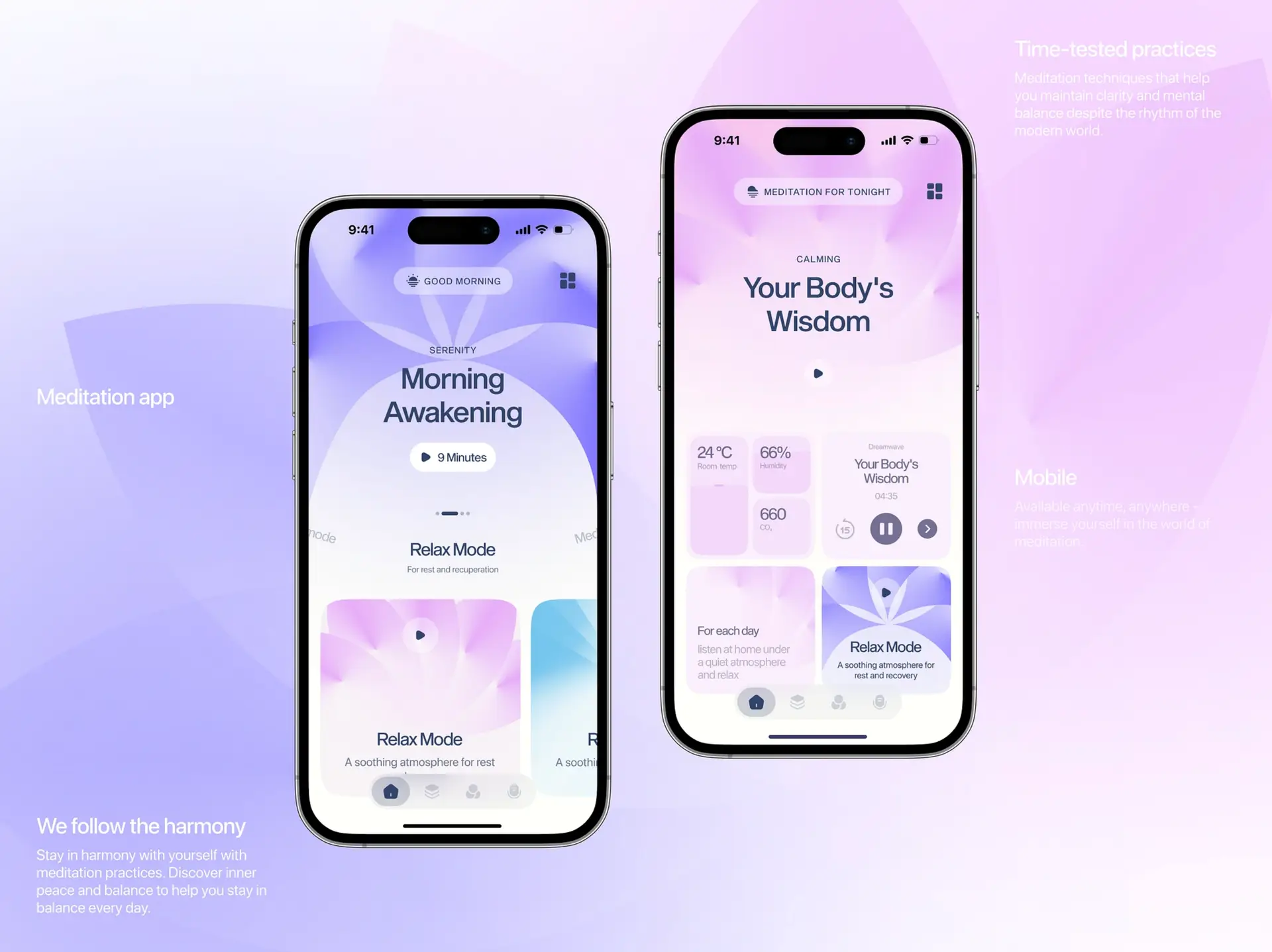
Source: Awsmd on Dribbble
In 2025, artificial intelligence (AI) will redefine personalization in UI/UX design, moving beyond basic recommendations to deliver deeply tailored user experiences. Leveraging advanced machine learning algorithms, AI will analyze user behavior and preferences to dynamically adapt interface elements in real time, creating interactions that are both relevant and meaningful. This evolution in hyper-personalization will not only optimize usability and engagement but also set new standards for how interfaces interact with users, making every digital experience feel uniquely crafted for the individual.
In 2025, hyper-personalization powered by AI is redefining how users interact with digital platforms. By analyzing behavior, preferences, and context, AI dynamically adapts interfaces in real-time, creating unique, tailored experiences. This approach enhances relevance, engagement, and conversions, setting new standards for user satisfaction.
Key Features
- Dynamic Interfaces: Adapt based on user behavior, location, and habits.
- Predictive UX: Anticipates needs and offers solutions proactively.
- Content Personalization: Delivers unique content aligned with user interests.
- AI Assistants: Provide personalized, on-demand support.
Personalization is crucial in creating meaningful digital experiences, as it improves relevance, increases user engagement, and drives conversions. Platforms that fail to adopt personalization risk losing users to competitors offering more tailored and engaging interactions. For example, an e-commerce app that remembers your preferences, adjusts its layout to suit the time of day, and recommends items based on your behavior ensures that every interaction feels uniquely crafted for you, enhancing satisfaction and loyalty.
Actionable Tips
- Use tools like Adobe Sensei or Figma AI plugins to implement dynamic, user-centric designs.
- Leverage behavioral analytics to refine journeys and maximize engagement.
By integrating hyper-personalization, businesses can foster loyalty and stay ahead in a competitive market.
2. Extended Reality (XR): Redefining Immersive Digital Experiences with AR, VR, and MR
As we look toward 2025, Extended Reality (XR)—a fusion of Augmented Reality (AR), Virtual Reality (VR), and Mixed Reality (MR)—is emerging as a key trend in UX/UI design. These immersive technologies are no longer confined to entertainment; they are reshaping industries like e-commerce, healthcare, education, and real estate by enhancing how users interact with digital content. XR seamlessly integrates physical and virtual experiences, offering unparalleled engagement and adaptability.
Key Features
- AR-Enhanced E-commerce: Dynamic interfaces that allow users to visualize products in their physical space, improving purchase confidence and decision-making.
- Virtual Collaboration Spaces: Virtual reality environments designed for teamwork and remote collaboration, allowing users to interact in shared virtual spaces.
- 3D and Interactive Interfaces: Depth-rich designs using 3D elements that captivate users and enhance interaction within both AR and VR contexts.
- Mixed Reality Experiences: Interfaces that blend real and virtual elements, providing users with seamless transitions between the two.
- XR Environments: Flexible platforms that incorporate AR, VR, and MR, offering users a spectrum of engagement options within a single cohesive experience.
Extended Reality (XR), encompassing AR, VR, and MR, is shaping 2025 UX/UI trends by delivering immersive visuals and interactivity that captivate users, encouraging longer engagement and greater satisfaction. These technologies also enhance decision-making by reducing uncertainty and building user confidence—whether through AR enabling virtual product placements, VR offering fully simulated environments, or MR seamlessly blending physical and digital elements. Additionally, businesses that adopt XR demonstrate their commitment to innovation, positioning themselves as forward-thinking leaders in an increasingly competitive digital landscape. For example, AR enhances shopping experiences by allowing users to virtually place furniture in their homes, VR provides medical training in safe, simulated settings, and MR enables users to manipulate virtual designs in real-world contexts.
Actionable Tips
- Adopt Advanced Development Frameworks: Use platforms like ARKit (iOS), ARCore (Android), or Microsoft Mesh to create immersive, responsive XR experiences.
- Integrate 3D Models: Enhance user interaction with high-quality 3D assets that integrate seamlessly into AR and VR interfaces.
- Blend AR, VR, and MR Seamlessly: Design experiences that provide flexibility, allowing users to navigate between augmented, virtual, and mixed realities based on their preferences and context.
The Role of XR in UX/UI Design
In 2025, XR will redefine UX/UI design by offering users a spectrum of immersive experiences that adapt to their needs and environments. Whether it’s through AR’s real-world enhancements, VR’s fully immersive interfaces, or MR’s seamless blending of the two, XR enables designers to create impactful, forward-thinking experiences. As this trend continues to grow, adopting XR will be essential for businesses and designers looking to lead in a rapidly evolving digital landscape.
3. Voice User Interfaces (VUIs): Embracing Conversational and Hands-Free Interaction
Voice User Interfaces (VUIs) are transforming digital experiences, offering users an intuitive, hands-free alternative to traditional input methods. As voice technology becomes increasingly integrated into everyday life, platforms like smart assistants have normalized conversational interactions. By 2025, VUIs will be a cornerstone of UX/UI design, enhancing accessibility, convenience, and engagement. Designing for voice is no longer optional; it’s a necessity to meet the demands of modern users.
Key Features
- Voice-Activated Navigation: Enables users to control apps and devices using spoken commands, offering seamless and efficient interaction.
- Context-Aware Responses: Uses AI to understand user intent and deliver personalized, relevant answers based on context.
- Hybrid Visual and Voice Interfaces: Combines voice input with visual feedback to provide a comprehensive, user-friendly experience.
- Multilingual Voice Support: Supports multiple languages to accommodate diverse audiences and user preferences.
VUI adoption is reshaping the digital landscape by providing inclusive, efficient, and natural interaction methods. These interfaces enhance accessibility for users with disabilities, offering an alternative to traditional navigation methods. VUIs streamline processes with voice commands, making them faster and more convenient, especially in hands-free scenarios. Additionally, speaking is a natural and intuitive way to interact, reducing complexity and increasing user satisfaction. Businesses that embrace VUIs demonstrate their commitment to innovation, ensuring their platforms remain relevant and competitive in a growing digital ecosystem.
Actionable Tips
- Optimize for Voice Search: Adapt content and design to align with natural language patterns and long-tail keywords to improve discoverability.
- Leverage Hybrid Interfaces: Combine visual and voice interaction to provide users with clarity and a more engaging experience.
- Integrate Contextual AI: Build voice systems that dynamically adapt to user intent, delivering personalized and intuitive responses.
Focus on Multilingual Accessibility: Include support for multiple languages to reach a broader, more diverse audience.
4. Minimalism Meets Functionality: Simplicity with Purpose
Minimalism has long been a staple of UI/UX design, but 2025 will see the evolution of this trend into functional minimalism—an approach that balances simplicity with usability. This design philosophy moves beyond aesthetics, emphasizing clarity, focus, and purpose. By stripping away unnecessary distractions and prioritizing user needs, functional minimalism delivers clean, intuitive interfaces that guide users seamlessly toward their goals.
Key Features
- Whitespace Utilization: Strategic use of empty space to enhance readability and reduce visual clutter, guiding user focus to key elements.
- Clear Call-to-Actions (CTAs): Prominent, simplified buttons and links that drive user engagement and streamline navigation.
- Streamlined Navigation: Fewer steps to complete tasks such as signing up or checking out, ensuring a smoother user journey.
- Visual Hierarchy: Using typography, color, and contrast to direct user attention effectively and improve usability.
- Microinteractions: Subtle animations or feedback that make interactions intuitive, delightful, and engaging.
- Accessibility Focus: Clean, easy-to-navigate designs that prioritize inclusivity, ensuring all users can interact with the interface seamlessly.
In an age of digital overload, users crave interfaces that are easy to navigate and free of unnecessary clutter. Minimalism achieves this by reducing cognitive load, improving usability, and enhancing overall satisfaction. It’s not just about making designs look beautiful; it’s about ensuring they function effectively. A well-designed minimalist interface directs user attention to what matters most, providing clarity and a more engaging experience. For instance, Google’s homepage is a prime example of functional minimalism, with its vast whitespace and singular focus on search, delivering both speed and efficiency.
Actionable Tips
Simplify Navigation: Reduce unnecessary elements and focus on clear, concise menu structures that enhance usability.
Leverage Whitespace Strategically: Use empty space to highlight essential content and guide user attention without overwhelming them.
Prioritize Speed and Performance: Optimize interfaces using tools like Google Lighthouse to ensure designs are fast and efficient.
Incorporate Microinteractions: Add subtle animations or effects to enhance feedback and create a more intuitive user experience.
Focus on Accessibility: Use high-contrast color schemes, scalable fonts, and screen-reader-friendly structures to make interfaces inclusive.
5. Ethical and Sustainable UI/UX: Designing for Good
As users become more discerning about the values and practices of the brands they support, ethical and sustainable design will become a key differentiator. Whether it’s through energy-efficient apps, transparent privacy practices, or reusable design components, adopting these principles reflects a commitment to positive change. By integrating these practices into their UX/UI strategies, businesses can not only align with modern expectations but also create lasting, meaningful connections with their audience. Ethical and sustainable UI/UX isn’t just a trend; it’s the foundation for the future of design.
Key Features
Eco-Friendly Interfaces: Optimizing digital products to minimize energy and data consumption, ensuring efficient performance without unnecessary resource waste.
Transparency and Privacy: Clearly communicating data collection methods and empowering users with control over their personal information, fostering a culture of openness and respect.
Avoiding Dark Patterns: Designing with integrity by eliminating manipulative tactics, such as hidden subscription traps, and ensuring that all user flows are intuitive and honest.
Sustainable Design Systems: Creating reusable design components that reduce development waste, improve efficiency, and promote long-term sustainability in design practices.
Actionable Tips
Adopt Energy-Efficient Design: Build lightweight apps and websites optimized to reduce power and data usage, providing users with faster and more efficient experiences.
Ensure Transparency and Compliance: Follow GDPR and similar privacy regulations, and clearly communicate how user data is collected, stored, and used.
Eliminate Dark Patterns: Design interfaces that respect user autonomy by making cancelation flows, privacy settings, and user controls as straightforward as sign-up processes.
Create Sustainable Design Systems: Develop and maintain a shared design library that promotes reusability and minimizes redundant development, reducing resource consumption.
